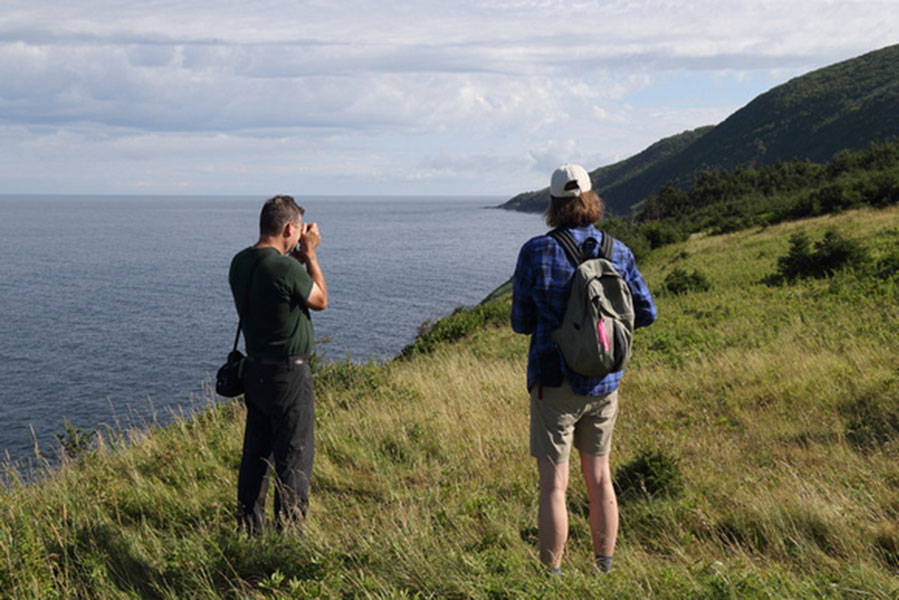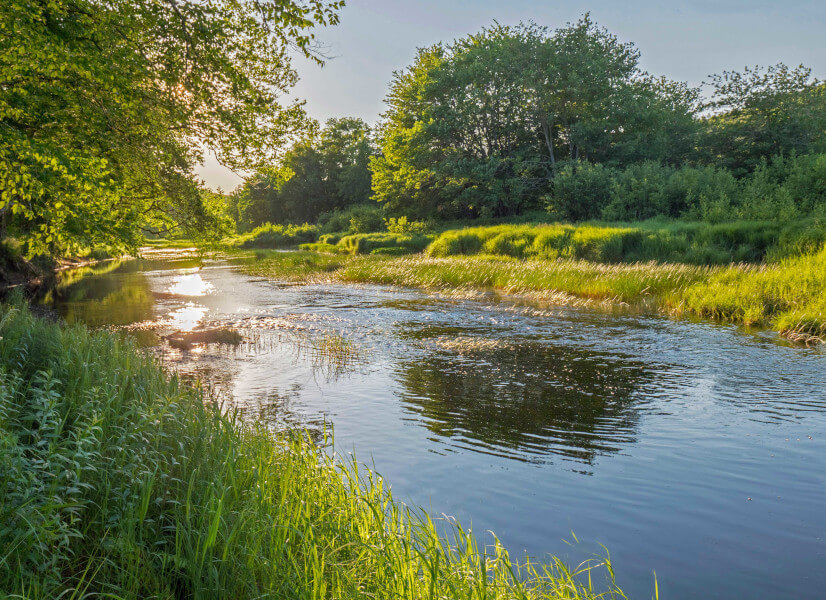HALIFAX: The Nova Scotia Nature Trust (NSNT) said it is continuing to protect more land in the province, particularly three parcels in the region.
NSNT Executive Director Bonnie said they are creating land assemblages for about 9,000 acres along in the St. Mary’s River in Guysborough County, 2,000 acres in the Mabou Highlands in Inverness County, and more than 100 acres in the Lime Hill-Marble Mountain area along the Bras d’Or Lake.
“We’ve seen tremendous success in all three of those areas over the last number of years, and it’s accelerating right now with all this public energy and interest, and the federal government investing significantly in helping community organizations protect land,” Sutherland stated. “There will be a continued stream of good news, I suspect, over the next year as we continue.”
Within the next week, Sutherland said the trust will be accepting a donation of more land in the Mabou Highlands, with the possibility “of more on the horizon.”
For 20 years, the NSNT said it worked with landowners in the Mabou Highlands to safeguard this spectacular coastal wilderness legacy. They said the Mabou Highlands conservation project is historic on many levels as it represents the largest land assemblage in its 25-year history.
The land encompasses a vast area of undeveloped coastline between Mabou Mines and Sight Point, in western Cape Breton, stretching six kilometers along the coast and two-and-a-half kilometers inland, to the top of the mountain plateau, the trust explained.
The nature trust said the site features a diversity of habitats including rich hardwood forests, brooks, ravines, coastal cliffs, and meadows. They said the lands are home to a range of wildlife including endangered songbirds such as the Canada Warbler and Eastern Wood-Peewee.
Much of the land was acquired by Americans who first discovered the area over 100 years ago, and wanted to ensure the lands were left intact, and available for the public to enjoy, the trust said. While visionary landowners began protecting their land formally through conservation easements with the Nature Trust as early as 2002, protecting 640 acres at Sight Point and south of MacKinnons Brook, the momentum grew significantly, as in early 2019, over 1,500 acres of additional land was protected, bringing the total to over 2,000 acres under protection, they stated.
Old foundations and cart tracks tell the story of the early Scottish settlers, and an extensive public hiking trail provides access to the scenic coastal wilderness, said the NSNT.
“That backs on to the wilderness area, so it’s a massive protected coastal land with wonderful hiking trails,” Sutherland described.

Donated by Alastair Saunders and Chris Corston, the conservation lands on the Bras d’Or Lake build on a mosaic of protected areas in Cape Breton preserving rare island and coastal habitats, wetlands and old-growth forests, the trust said.
The lands include the 80-acre MacRaes Island, a beautiful forested island ringed with pebble beaches and wetlands, while the Lime Hill property begins on the nearby shoreline, extending up Marble Mountain to the proposed North Mountain Wilderness Area, the NSNT noted.
The trust said it encompasses 100 acres of old growth forests, brooks and marshes, providing an important ecological corridor connecting the lake to the inland mountain wilderness.
The NSNT said it has been working with private landowners along the St. Mary’s River to create a “ribbon of green” since 2006. Securing the protection of critical floodplain and upland forest, islands, beaches, and other wildlife habitat along the river is vital to maintaining the health of the river, they said.
The nature trust pointed out that the river also provides crucial habitat for two species at risk, the Wood Turtle and the Atlantic.
Beyond its tremendous ecological value, the trust said the St. Mary’s River is also a legendary salmon and trout fishing river. People have explored its waters and forests for centuries, they said, noting that sections of the river are wonderful for paddling, it is well-known to birders and naturalists, and it is regularly used for field trips, educational activities and university field schools.
However, the NSNT said St. Mary’s faces increased pressures from many activities which impact the river’s ecological integrity and the species that live in and around it. While local residents and visitors have seen devastating changes over the past few decades, the trust said there are many people working to preserve the river’s wild legacy, including the St. Mary’s River Association, Environment and Climate Change Canada, and the Department of Lands and Forestry.
The Nature Trust said it has protected over 1,300 acres of conservation lands on the St. Mary’s River.
“One of our other big, flagship projects where we’ve protected many properties now along the river. Between us and the provincial protected areas, it is now 50 kilometres of that river that has been protected,” she said. “That’s another really exciting project that started slowly because private land tends to be in 50 or 100-acre blocks. So it’s not like one government can just designate thousands of acres with all this private land. We have to approach landowner by landowner. But we’re in it for the long game.”

One positive development from the global pandemic was that many people are valuing, appreciating and stepping up to protect wild places across Nova Scotia, Sutherland said.
“So many people have discovered nature during COVID,” she noted. “The trails are filled with people, you can’t even buy a canoe, or a sea kayak, or a bicycle these days because so many people discovered and used nature as the way to heal and look after their mental health and their physical health when we were all locked down. The woods and the beaches were the only places we could go.”
The nature trust recently announced that it is adding three coastal properties, including a pristine coastal island, a beautiful South Shore beach and wetlands, and stunning Cape Breton coastal highlands.
The NSNT said it launched a public campaign last September to raise the final $200,000 needed to secure all three lands, and were overjoyed by the outpouring of public support in response.
Thanks to public support and matching funds unlocked through federal government and other conservation partners, the NSNT said these new protected areas represent a $1 million victory for coastal conservation across the province.
Sutherland added that the trust is currently looking for people to volunteer as “property guardians.”
“It’s just people who are there, keeping an eye on things, helping to educate visitors not to drop their Tim Hortons cups, and those kinds of things,” she added. “Cleaning up trails, clearing up brush, dealing with environmental issues like removing invasive plants; it’s a great way people can volunteer in a really hands-on way.”


